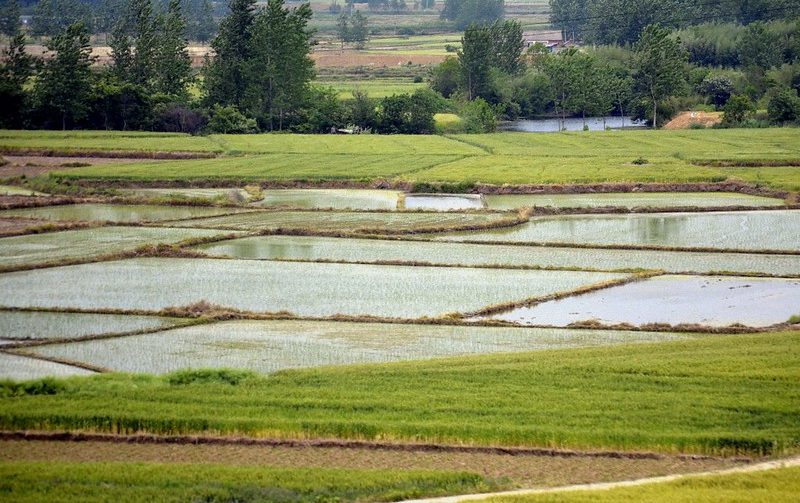The MSP system, in place since the mid-1960s, was part of the country’s drive to reduce dependence on food imports. It was an integral part of a package that included subsidized inputs meant to incentivize farmers to adopt new technologies and enhance farm productivity. The MSP was meant to protect farmers against price crashes that could occur with large harvests.
Most protests over the Farm Bills – now Act – are associated with the Minimum Support Price (MSP) — the premise being that the Act is the proverbial Trojan horse by which procurement operations by the government will be withdrawn gradually. These protests are perhaps the loudest in northern states, traditionally India’s wheat basket and rice bowl. To allay these concerns, the government immediately announced its rabi MSPs, increasing prices in nominal terms by 6 per cent for six crops, including wheat. But equally deafening is the silence and apparent lack of concern over the MSP in other states. Why haven’t all farmers been as vociferous? It is after all a pan-India price, announced for 23 crops across both seasons.
First, some context: the MSP system, in place since the mid-1960s, was part of the country’s drive to reduce dependence on food imports. It was an integral part of a package that included subsidized inputs meant to incentivize farmers to adopt new technologies and enhance farm productivity. And as the name suggests, the MSP was meant to protect farmers against price crashes that could (and do) occur with large harvests.
It is in its role as a floor price that a credible MSP — that is, one backed by procurement — matters to farmers. This is because procurement has effectively filled in for missing insurance markets; uptake of crop insurance remains stubbornly low. In principle, in deficit states (where demand exceeds local supply), market prices should be higher than the MSP, obviating the need for supporting the market at the level of MSP. However, this differential could be dampened or even eliminated by the distribution of grains under the National Food Security Act (NFSA). For example, the NFSA allocates over 3 million tons of rice to Bihar. Compare this with a total production of 5 million tons (of which 1 million tons is procured); the NFSA allocation is bound to flood the market and reduce prices (unless there are exports out of the state). As such, the MSP matters more in historically surplus states of Punjab and Haryana, where the government purchases over 80 per cent of wheat and rice output. It is but natural that farmers there are protesting, while protests are muted in states such as Bihar, where the government procures at most a quarter of rice output and no wheat.
In practice there is wide variation in the implementation of the MSP, across crops, states and categories of farmers. A 2016 report by the Niti Aayog notes that all surveyed Punjab farmers reported selling at the MSP, while other states often saw only one-third of farmers reporting sales at the MSP, and some, none at all (with sales at the lower open market prices). The report also finds that large farmers are able to sell a greater share of their produce at the MSP as compared to smaller farmers, who often rely on aggregators to sell their output.
An announced MSP without credible purchases by state agencies, is not only ineffective but can have unintended deleterious consequences, especially when the market is dominated by a few buyers, as is often the case in agricultural markets. For example, in Bihar when open market prices of tur dal (pigeon pea) were at a peak of over Rs. 200 per kg in 2015-16, and the MSP was at Rs. 45 per kg, traders were successfully able to tacitly collude by anchoring the prices they offered to farmers to levels well below the MSP. Because the state has relatively few market yards within easy distance, farmers, especially those with small marketable surpluses, could not realize the high market prices.
Even for rice, a crop for which MSP is backed by procurement, the degree to which farmers receive the MSP depends on whether procurement is through a levy on millers, or through custom milling where the government buys directly from farmers. While the levy system has no mechanism in place to ensure that millers buy grain at the MSP, custom milling has also been resisted as being unprofitable for millers, leading to a strike by millers in Odisha.
Thus while the MSP has played a role in mitigating downside risk for farmers, its effectiveness depends on the interplay of NFSA operations, crop choices, the degree of intermediation and competition (amongst buyers) in the market, and MSP implementation. More market-driven outcomes will require investments in infrastructure, so that farmers can expand their options to sell, and to operate in a level playing field. The MSP is not — and nor should it be — a substitute for technology-driven increases in farmer income.
JV Meenakshi is Professor, Department of Economics, Delhi School of Economics. Devesh Roy is senior research fellow, International Food Policy Research Institute. Views expressed are their own. This article was originally published in The Economic Times.
Odisha’s Deputy Chief Ministers Inaugurate Gender Responsive Cell to Strengthen Inclusive Agricultural Governance: A pioneering unit within the DAFE, developed
The IFPRI-AERA session on “Transforming Agri-Value Chains: Emerging Frontiers for Agribusiness” held on 3 December at the Indian Council of Agricultural
24 September 2025, New York: The SAARC (South Asian Association for Regional Cooperation) Agriculture Centre (SAC), Dhaka, and the International




